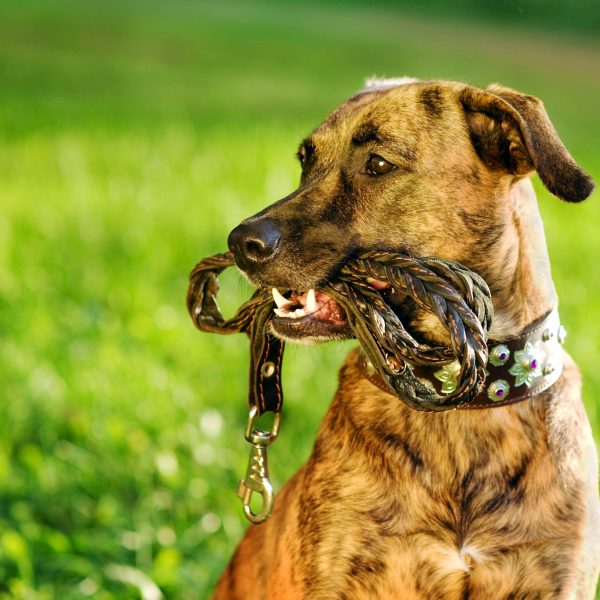Should I Train My Dog to Walk Off-Leash?
 Training your dog to walk with you off-leash is an enticing idea, but getting there is hard work. You must build the trust it will take for your dog to listen. Making sure your pup will come when you call them, drop whatever they’re holding, or stop chasing the wild animal or automobile can be a trying process.
Training your dog to walk with you off-leash is an enticing idea, but getting there is hard work. You must build the trust it will take for your dog to listen. Making sure your pup will come when you call them, drop whatever they’re holding, or stop chasing the wild animal or automobile can be a trying process.
When your dog is off-leash, they’ll be able to follow his natural instincts to run and explore the area. But, they must retain the discipline you’ve taught them to keep themselves, and others, safe.
What to Consider Before Training Off-Leash
Letting your dog loose in the world requires lots of training. It’s a big responsibility. If your pup isn’t properly trained, there could be trouble. Before you seriously consider training your pup to walk off-leash, there are certain standards they should meet to help prevent your dog from getting lost or running off when they are off-leash.
1. Basic Commands
For one thing, your dog must be an expert at following the basic commands:
- Sit
- Down
- Stay
- Heel
- Come
A solid and reliable grasp of these basic commands is essential. They should consistently follow these commands when you are out and about and they are on a six-foot leash.
If you are still training your dog on the leash, keep in mind that when they are off-leash they may stray pretty far. They could even miss your visual cues. Make sure you also instill verbal cues just in case.
2. Breed Matters
Different dog breeds have been bred for certain purposes. Naturally, members of different breeds are wired in a wide variety of ways. They have different habits, proclivities, and desires. This means that some breeds are easier to train for off-leash reliability.
For example, Siberian Huskies may prove a challenge to train off-leash because they were bred to run, have a high prey drive, and also have an innate urge to wander. Huskies are sled dogs – strong enough to pull a sled through the tundra. Plus, they have the drive to travel hundreds of miles.
Dogs bred to hunt small animals, like Terriers, may also prevent a challenge. They’ll really have to fight their instincts to stop chasing something with only a simple command. Oftentimes, these types of dogs should only be let off-leash in securely fenced areas.
Companion dogs that are eager to please and aren’t known for having an independent nature will probably be easier to train than independent breeds. Some dog breeds with an instinct to guard and protect are often not a good fit for off-leash training because they may see it as an opportunity to expand their territory and become territorial.
3. Professional Trainer
If you suspect your dog will be harder to train because of their genetic makeup, don’t let it stop you from trying! It’s just something to be aware of and could mean you need the help of a professional trainer. And, it may mean you’ll need to be open to accepting failure in case training isn’t able to overcome instinct.
4. Evaluate Risks
Of course, know that having your dog walk off-leash will always carry risks. There is no foolproof method of training, nor can you predict what will happen out in the world. So, when you consider training your pup, evaluate the risks.
Also consider your dog’s temperament. Do you think they are trustworthy? Are they jumpy and anxious? Are they likely to bolt if something spooks them? How do they interact with and approach strangers, other dogs, and other animals?
Training is based on the relationship between a dog and their owner. If you know your dog well and really educate yourself on the subject of off-leash training, then you will make the right choice.
